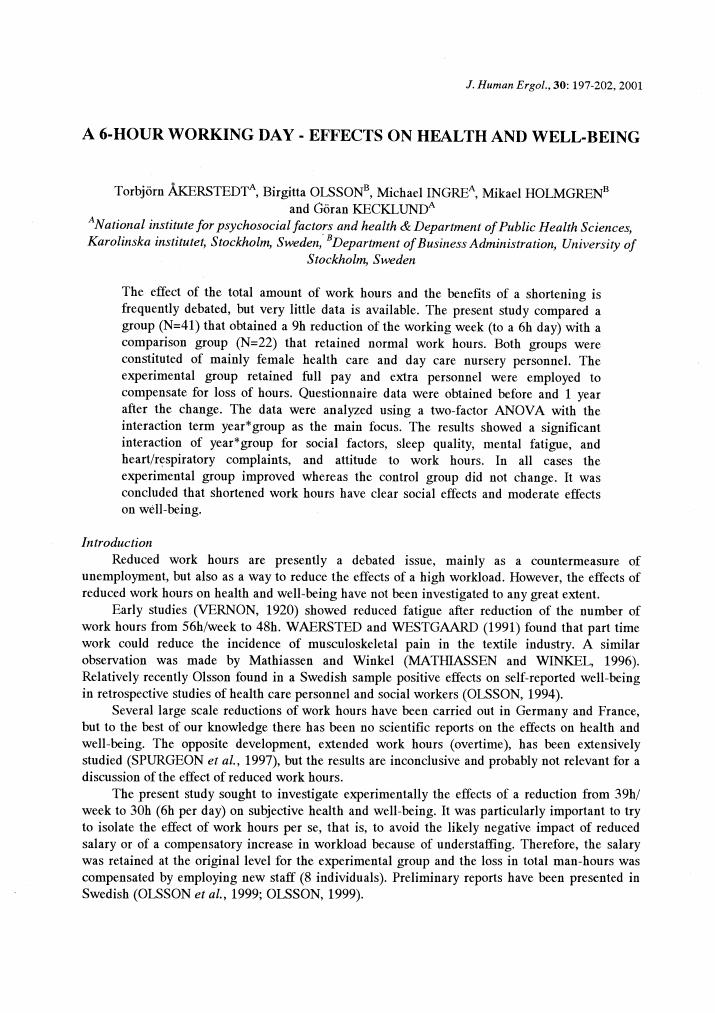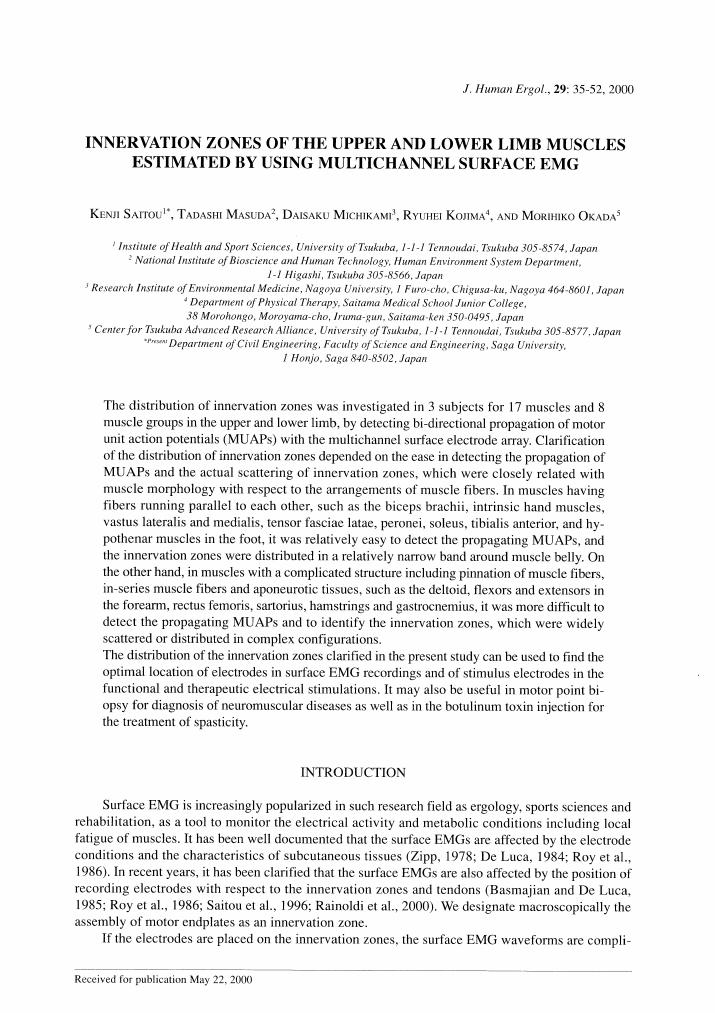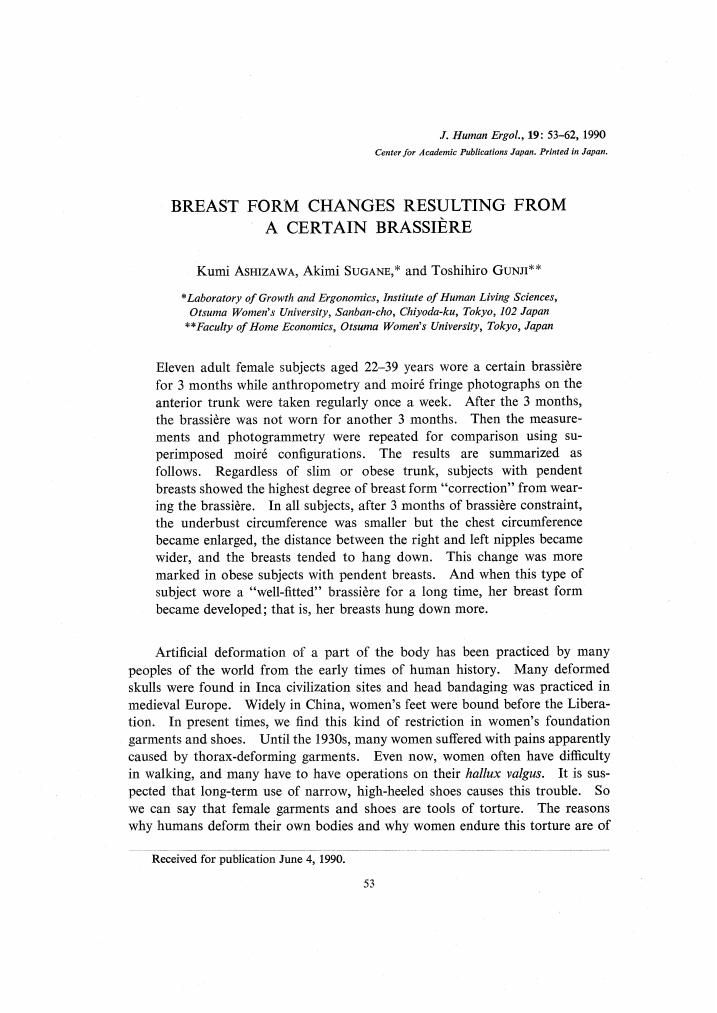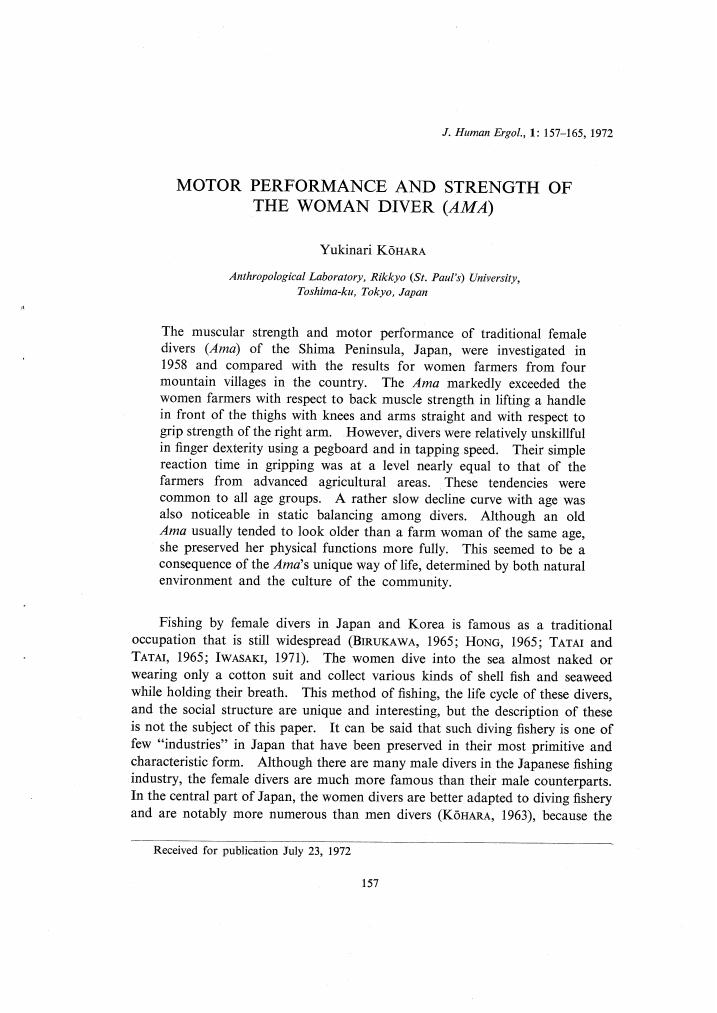- 著者
- Torbjorn ÅKERSTEDT Birgitta OLSSON Michael INGRE Mikael HOLMGREN Göran KECKLUND
- 出版者
- Human Ergology Society
- 雑誌
- Journal of Human Ergology (ISSN:03008134)
- 巻号頁・発行日
- vol.30, no.1-2, pp.197-202, 2001-12-15 (Released:2010-06-28)
- 参考文献数
- 13
- 被引用文献数
- 2
- 著者
- ODA Masaaki TANIGUCHI Konomi WEN Mei-Zing HIGURASHI Makoto
- 出版者
- 人類働態学会
- 雑誌
- Journal of Human Ergology (ISSN:03008134)
- 巻号頁・発行日
- vol.18, no.2, pp.231-235, 1989
- 被引用文献数
- 5
- 著者
- Terutoshi SAKATE
- 出版者
- Human Ergology Society
- 雑誌
- Journal of Human Ergology (ISSN:03008134)
- 巻号頁・発行日
- vol.7, no.2, pp.127-134, 1978-12-15 (Released:2010-06-28)
- 参考文献数
- 22
- 著者
- MASAHITO MORITA
- 出版者
- Human Ergology Society
- 雑誌
- Journal of Human Ergology (ISSN:03008134)
- 巻号頁・発行日
- vol.48, no.2, pp.69-81, 2019 (Released:2021-07-02)
- 参考文献数
- 44
High sociality is a prominent characteristic of humans. To further understand this aspect, the present study has interest in behaviour related to communication and interaction between two individuals in everyday life. The author exploratorily observed 518 dyads sitting outside by using more than 107-hour videos from a webcam set up in New York’s Times Square in 2018. Such a unique method enabled observation of people in a natural setting with little intervention with the subjects. Probably, most of the subjects were tourists. The observation found that all subjects uttered something (moved their mouth) while they were seated and that they occasionally used gesture and did body contact. More than half of the dyads stayed there shorter than about seven minutes. Results of multiple linear regressions showed that both subjects’ characteristics, such as sex and age, and day/time conditions affected nonverbal types of behaviour. Potential sex differences in opposite-sex pairs are also considered. This observation contributes to accumulating novel fundamental results on social behaviour. These findings are discussed from biosocial perspectives, including reference to the evolution of language. This paper carefully explains merits and limitations of the new methodology, and then gives some implications for future work.
1 0 0 0 OA INNERVATION ZONES OF THE UPPER AND LOWER LIMB MUSCLES ESTIMATED BY USING MULTICHANNEL SURFACE EMG
- 著者
- KENJI SAITOU TADASHI MASUDA DAISAKU MICHIKAMI RYUHEI KOJIMA MORIHIKO OKADA
- 出版者
- Human Ergology Society
- 雑誌
- Journal of Human Ergology (ISSN:03008134)
- 巻号頁・発行日
- vol.29, no.1-2, pp.35-52, 2000-12-15 (Released:2010-06-28)
- 参考文献数
- 24
- 被引用文献数
- 4
- 著者
- Lawrence SMITH Carl MASON
- 出版者
- Human Ergology Society
- 雑誌
- Journal of Human Ergology (ISSN:03008134)
- 巻号頁・発行日
- vol.30, no.1-2, pp.83-87, 2001-12-15 (Released:2010-06-28)
- 参考文献数
- 10
The reduction of exposure to longer runs of successive night duties is often one of the aims of 'best practice' intervention.. The objective of this pilot study was to examine the effects of a change in rota upon sleepiness and fatigue, and potential age-related issues in relation to the change. Participants were 102 police officers, mean age 33.60 (sd 6.11), mean shiftwork experience 10.56 years (sd 6.84). Testing occurred at least one month before the change from the existing 'Ottawa' system to a new rota that split a run of 7 consecutive night shifts into blocks of 3 and 4 within the rota cycle, and 6 months after the change. Measures of critical flicker fusion, subjective fatigue and sleepiness, and stimulant intake were taken in relation to selected night shifts on both rotas. Older officers tended to report higher fatigue and sleepiness, and higher caffeine intake than the younger shiftworkers irrespective of rota or shift. The findings tend to suggest that the change of rota had little effect but that age may play a substantial role in responses to night work.
- 著者
- Kumi ASHIZAWA Akimi SUGANE Toshihiro GUNJI
- 出版者
- Human Ergology Society
- 雑誌
- Journal of Human Ergology (ISSN:03008134)
- 巻号頁・発行日
- vol.19, no.1, pp.53-62, 1990-06-15 (Released:2010-06-28)
- 参考文献数
- 4
- 被引用文献数
- 2
- 著者
- Yukinari KOHARA
- 出版者
- Human Ergology Society
- 雑誌
- Journal of Human Ergology (ISSN:03008134)
- 巻号頁・発行日
- vol.1, no.2, pp.157-165, 1972-12-15 (Released:2010-06-28)
- 参考文献数
- 15
- 著者
- Muhammad H. Al-Haboubi
- 出版者
- Human Ergology Society
- 雑誌
- Journal of Human Ergology (ISSN:03008134)
- 巻号頁・発行日
- vol.27, no.1-2, pp.9-16, 1998-12-15 (Released:2010-06-28)
- 参考文献数
- 23
1 0 0 0 OA SHIFTWORKER SLEEP STRATEGIES
- 著者
- D. I. TEPAS
- 出版者
- Human Ergology Society
- 雑誌
- Journal of Human Ergology (ISSN:03008134)
- 巻号頁・発行日
- vol.11, no.Supplement, pp.325-336, 1982-12-15 (Released:2010-06-28)
- 参考文献数
- 20
This paper examines the sleep strategies practiced by shiftworkers and explores sleep variable interventions which might reduce the incidence of sleep complaints among shiftworkers. For analysis purposes, a day during the workweek can be segmented into four periods of time : work, sleep, an optional and shorter sleep period or naps, and off time. An analysis of survey data from shiftworkers indicates that the morning, afternoon/evening, and night shifts result in differences for these periods in sequence, length, and time-of-day. The sequence for day shift workers is sleep, work, nap, off time, for afternoon/evening workers sleep, off time, nap, work, and for night workers sleep, off time, nap, work. Night shift workers have the shortest sleep period, the longest nap period, sleep during the day, have a higher incidence of napping, and sleep after rather than before work. Thus, as a group they show a high incidence of sleep complaints. However, night shift workers who do not report napping show a significantly lower incidence of sleep complaints than those who report nap times. The data suggest a number of possible sleep variable interventions : limiting night shift work to natural short sleepers, recommending minimal napping while on the night shift, changing the usual sequence of periods to allow sleep at a more favorable time-of-day, and maintaining the same sequence for all shifts.





